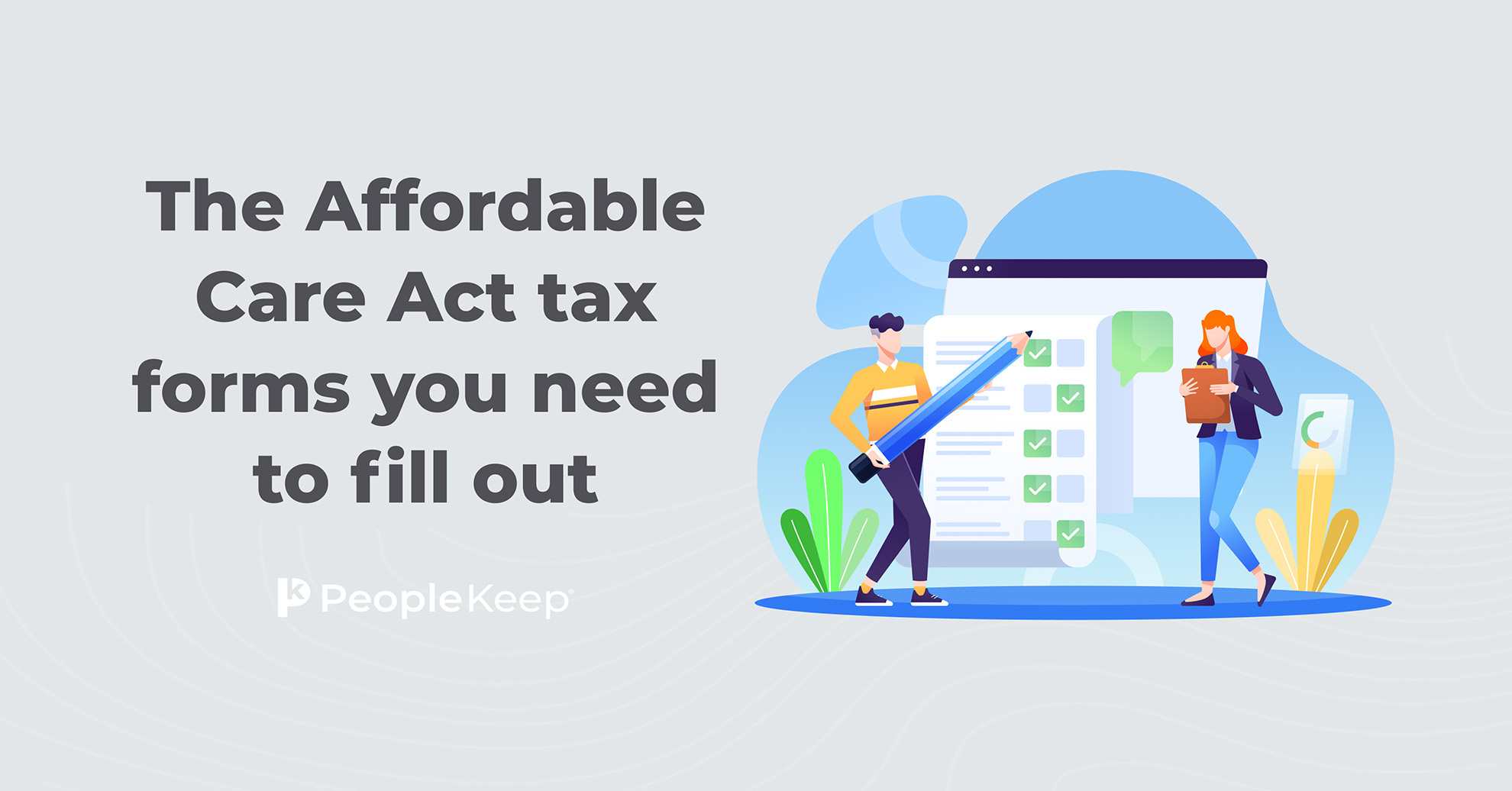How to calculate your premium tax credit with a QSEHRA
By Holly Bengfort on August 31, 2023 at 1:34 PM
If your employer offers you a qualified small employer health reimbursement arrangement (QSEHRA), you can use that health benefit to be reimbursed for your individual health insurance premiums and out-of-pocket medical expenses. But depending on what your income was before you were eligible for the QSEHRA benefit, you may have had assistance paying your insurance premiums through a premium tax credit (PTC), a federal health insurance subsidy that helps people afford healthcare coverage.
If this is the case for you, you need to know how your QSEHRA allowance impacts your subsidy.
In this article, we'll explain how to calculate your health insurance tax credits with a QSEHRA.
How does the PTC work?
The premium tax credit1 is a form of financial assistance that helps individuals with the cost of health insurance. The federal government created this health insurance subsidy to help lower-income Americans buy affordable individual or family health insurance coverage through the Health Insurance Marketplace and state marketplaces, also known as public exchanges, created by the Affordable Care Act (ACA).
You can use a PTC to lower your monthly payment, known as your insurance premium. The tax credit you receive depends on your household size and income.
Below are the criteria that determine eligibility for subsidies:
- For household incomes between 100% and 400% of the federal poverty level (FPL), you meet eligibility criteria for PTCs that reduce your monthly premium for a Marketplace health insurance plan. If your income is at or below 150% FPL, you may qualify for a special enrollment period to enroll in or change Marketplace coverage.
If you file your tax return as married filing separately, you won't be eligible for the premium tax credit unless you're a victim of domestic abuse and spousal abandonment and meet certain criteria, according to the IRS2.
You can receive PTCs on your federal income tax return or choose advance payment to help pay for monthly insurance premiums:
- If you exceed the qualified amount of tax credit advance payments based on your final yearly income, you'll have to repay the excess amount when you fill out your tax return.
- If you don't use all of your PTC, you'll get the extra money back from the IRS when you do your taxes.
While you can purchase health plans through various sources, including private exchanges and insurance brokers, the only way to obtain your PTC is through a Marketplace plan on the health insurance exchanges.
How is PTC eligibility calculated?
Thanks to the Inflation Reduction Act of 2022, you'll never pay more than 8.5% of your annual household income for marketplace health insurance coverage through the end of 2025—even if your household income exceeds 400% of the FPL.
The PTC amount you’ll receive will be based on your income, your household size, and the cost of the second-lowest-cost silver plan available to you on the marketplace.
According to KFF3, an individual must earn an income of at least $13,590 in 2023 to qualify for premium tax credits in the Health Insurance Marketplaces. A family of four must earn an income of at least $27,750 in 2023 to qualify for health insurance subsidies. If your income falls below this threshold, you’ll be eligible4 for Medicaid or the Children's Health Insurance Program (CHIP).
There are several online subsidy calculators that can help you determine your PTC, including KFF's Health Insurance Marketplace Calculator5. It asks for information regarding your family size and annual income. This subsidy calculator estimates what you will pay for health coverage and how likely you are to be eligible for a PTC based on the personal information you provide.
What are the rules for QSEHRAs and PTCs?
Whether you can still collect your PTC when participating in a QSEHRA depends on affordability.
For a QSEHRA to be affordable,6 employees can't pay more than 9.96% of their income in 2026 (9.02% in 2025) for the second-lowest-cost silver plan premium on the Marketplace after they use their QSEHRA allowance.
You can use the following calculations to determine affordability:
|
Steps |
Formula |
|
Divide your expected household income for the year by 12 to get your income per month. |
Household income / 12 = monthly income |
|
Multiply your monthly income by 9.96% (0.0996). |
Monthly income * 0.0996= X |
|
Visit HealthCare.gov or your state marketplace and enter the monthly premium of the second lowest-cost silver plan. Subtract the amount in the previous step from this premium to get the minimum affordable QSEHRA allowance. |
Second lowest-cost silver plan premium in your area |
|
Subtract your QSEHRA allowance from the second lowest-cost silver plan premium in your area |
Second lowest-cost silver plan premium - QSEHRA allowance |
If the value you end up with is greater than 9.96% of your income in 2026, the QSEHRA isn't affordable. If the value is less than 9.96% of your income in 2026, the QSEHRA is affordable.
For example, let's assume a 27-year-old employee in Washington state receives a $250 monthly QSEHRA allowance from their employer. They earn $50,000 per year. The second lowest-cost silver plan premium for that employee in their area for 2026 is $293.38 per month.
|
Example |
|
$50,000 / 12 = $4,166.67 $4,166.67 * 0.0996 = $415 Silver plan cost is $293.38 and QSEHRA allowance is $250 per month $293.38 - $250 = $43.38 $43.38 < $415 |
In the example above, the employee's QSEHRA would be affordable.
If your QSEHRA isn't affordable, you may be eligible for a premium tax credit. However, if your QSEHRA allowance is affordable, you can't receive these tax credits.
If your QSEHRA allowance isn't affordable7, you must reduce your subsidy by the amount of your monthly QSEHRA allowance. You don't have the option to opt out of a QSEHRA.
For example, let's say an employee receives an unaffordable QSEHRA allowance of $150 and is eligible for $300 in PTC. They would subtract their $150 allowance from the $300 subsidy, which is $150. The employee can therefore claim a $150 tax credit.
Conclusion
PTCs, also known as health insurance subsidies, are a form of financial assistance created to lower monthly health insurance costs. If you participate in a QSEHRA and your allowance isn't considered affordable, you can still claim PTCs. However, you do have to include your allowance in affordability calculations to determine the final amount of your tax credit.
By understanding how to calculate your PTC with a QSEHRA, you can effectively manage your healthcare expenses and ensure that you're taking full advantage of the benefits available to you.
This article is intended for informational purposes. If you have any questions or need further guidance, consult with a tax professional.
This article was originally published on January 20, 2017. It was last August 31, 2023.
- https://www.healthcare.gov/glossary/premium-tax-credit/
- https://www.irs.gov/affordable-care-act/individuals-and-families/eligibility-for-the-premium-tax-credit
- https://www.kff.org/faqs/faqs-health-insurance-marketplace-and-the-aca/how-much-can-i-earn-and-qualify-for-premium-tax-credits-in-the-marketplace/
- https://www.healthcare.gov/lower-costs/
- https://www.kff.org/interactive/subsidy-calculator/
- https://www.healthcare.gov/downloads/qsehra-worksheet.pdf
- https://www.law.cornell.edu/uscode/text/26/36B
Check out more resources
See these related articles

Guide to premium tax credits for health insurance
See how premium tax credits can lower health insurance costs. Our guide provides the information you need to navigate this important aspect of healthcare.

The Affordable Care Act tax forms you need to fill out
Make sure you're prepared for tax season with this guide to filling out the necessary IRS forms for the Affordable Care Act, also known as ObamaCare.

Does medical debt affect your credit score?
Find out how medical debt can impact your credit score and what steps you can take to protect your financial health in this informative article.



